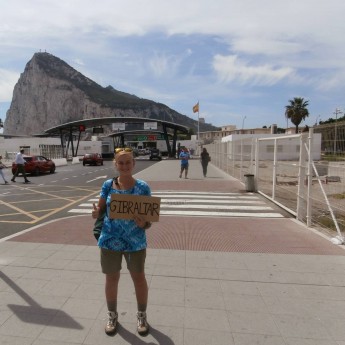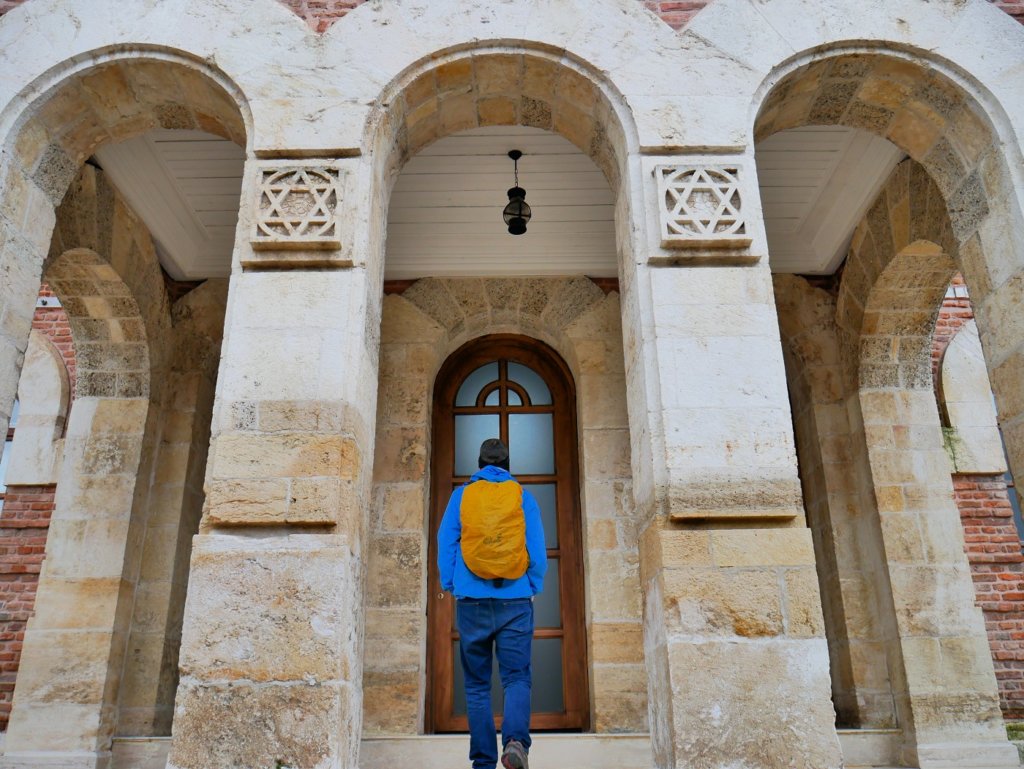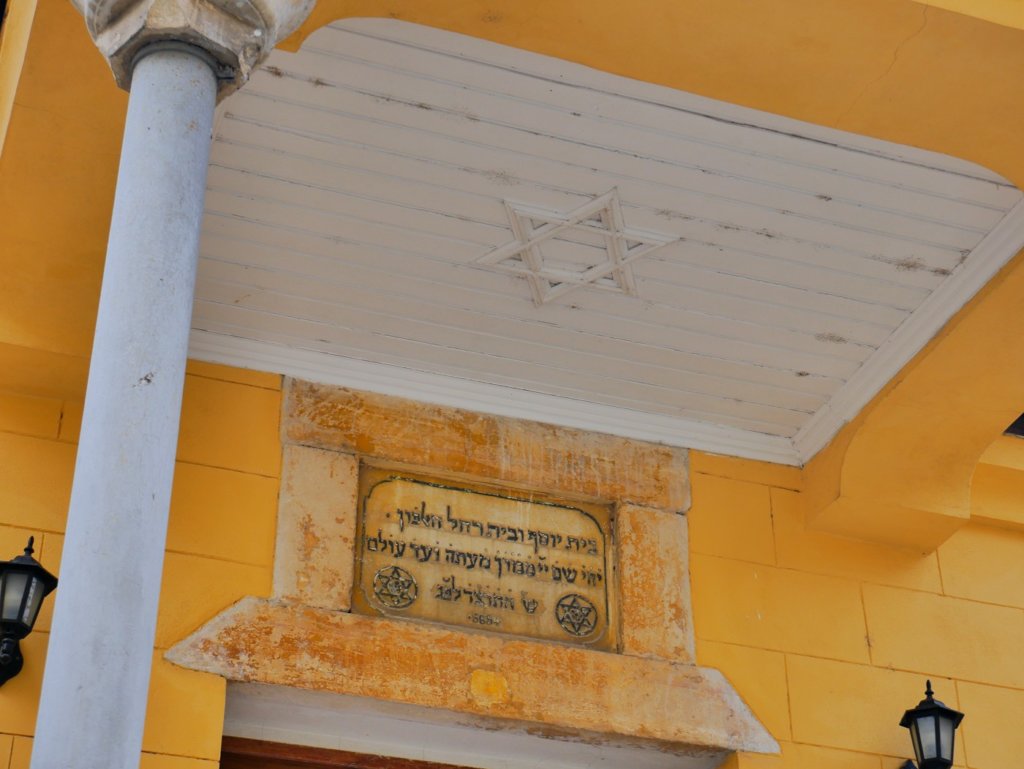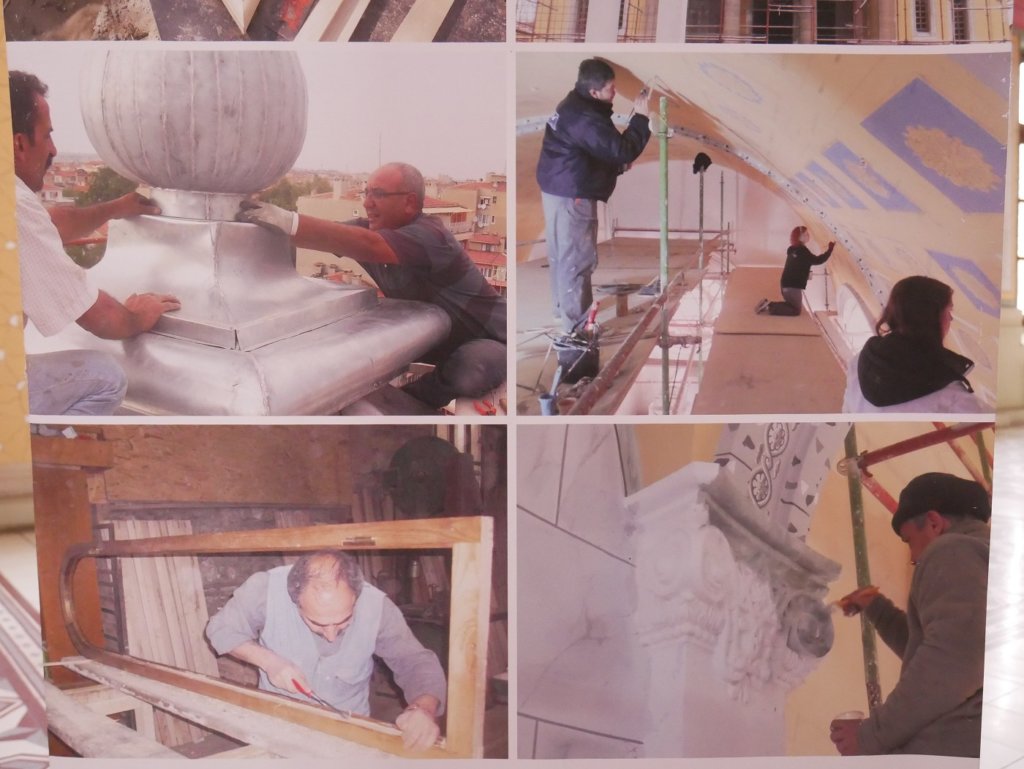
During our eight-day stay in Edirne, Turkey, I had a very long list of places to visit or check out. The city is really full of history. One site stood out on Google Maps: the Great Synagogue of Edirne. When I read that it’s actually open to visit for non-Jews, I thought it would be cool to go there. So on November 30th, 2021 we visited.
Why Have I Never Been to a Synagogue?
The Synagogue Exterior
More rain was in the forecast for later. Jonas navigated to the synagogue because he really wanted to walk via Saraçlar Caddesi—the main pedestrian street in Edirne. The Great Synagogue of Edirne (Turkish: Edirne Büyük Sinagogu) is a little tucked away in the southern part of the historic core of Edirne. Once off the main pedestrian street, we jumped over puddles of water till we saw the yellow building.
We made sure to visit on a common Tuesday and not a weekend day to make sure it’s open. I recently learned that Judaism has a lot of minor and major holidays, so we still weren’t sure it wouldn’t be closed. We walked up to the gate and saw it was open. So far, so good.
There was a guardhouse with a metal detector and a bag scanner. That’s some pretty serious security for Turkey, considering not even the Ayasofya in 2021 has a metal detector or a guy with a wand. Though we said “Merhaba?” aloud, there seemed to be no guard on this cold day. We were about to walk in past the glass guardhouse when a door opened. A guard with a bunch of keys opened the glass house, turned on the scanner and metal detector, and had us go through. He didn’t say a word and then disappeared again.
The synagogue building itself was closed. With the guard gone, we didn’t expect to enter the synagogue anymore. So what do we do now? I guess we walk around the building to check it out while I read Jonas the Wikipedia page. The synagogue had been abandoned for decades until its renovation and eventual reopening in 2015. That explains the building’s current excellent condition.
Behind the synagogue itself was another building without context. And close to the entrance was another, smaller building with Hebrew writing and a Star of David. Does the rabbi live there? No idea what function these side buildings have. Same with the little stone fountain behind the guardhouse made of stone that could have been part of the original building.



We heard some voices at the entrance but were otherwise ready to call it a day. I took some more photos of the exterior when Jonas told me that the door had opened. Okay, I guess we’re going in?
Entering the Great Synagogue of Edirne
We entered the synagogue. There was another group of people inside who might have been the reason why the building opened up. The lights were turned off but there was plenty of natural light to show the interior. It was surprisingly church-like; an altar, chairs facing the altar, chandeliers, arches, columns, and a balcony. Unlike a church, the balcony was very big.
I didn’t think anything of it at the time, but there was no box of yarmulkes for the men to put on. So I guess that wasn’t a requirement and therefore Jonas didn’t wear one. We’re so used that only I have to make sartorial changes before entering a place of worship (e.g. hijab in a mosque, mini hijab in an orthodox church) that this didn’t even cross my mind. Needless to say, he would have worn one if they were available.
There were some informative posters at the entrance that recounted the story of the Sephardic Jews of Edirne, the great fire of Edirne, and the building, abandonment, and revival of this synagogue. There were pictures of how it looked before renovation works started. It’s an impressive transformation and you can see how they copied the original interior decorations.
We wandered around towards the altar with doors in a niche, a wooden chest, and more seats. I’m not sure where the Torah scrolls are kept, but it’s either in the chest or behind those doors. The ornate niche itself contained some Hebrew writing, which I later translate to learn it’s the ten commandments. There are three big chandeliers in the nave with a Star of David shape. It’s only when reading about synagogue architecture that I realize that the upstairs balcony is the women’s section.

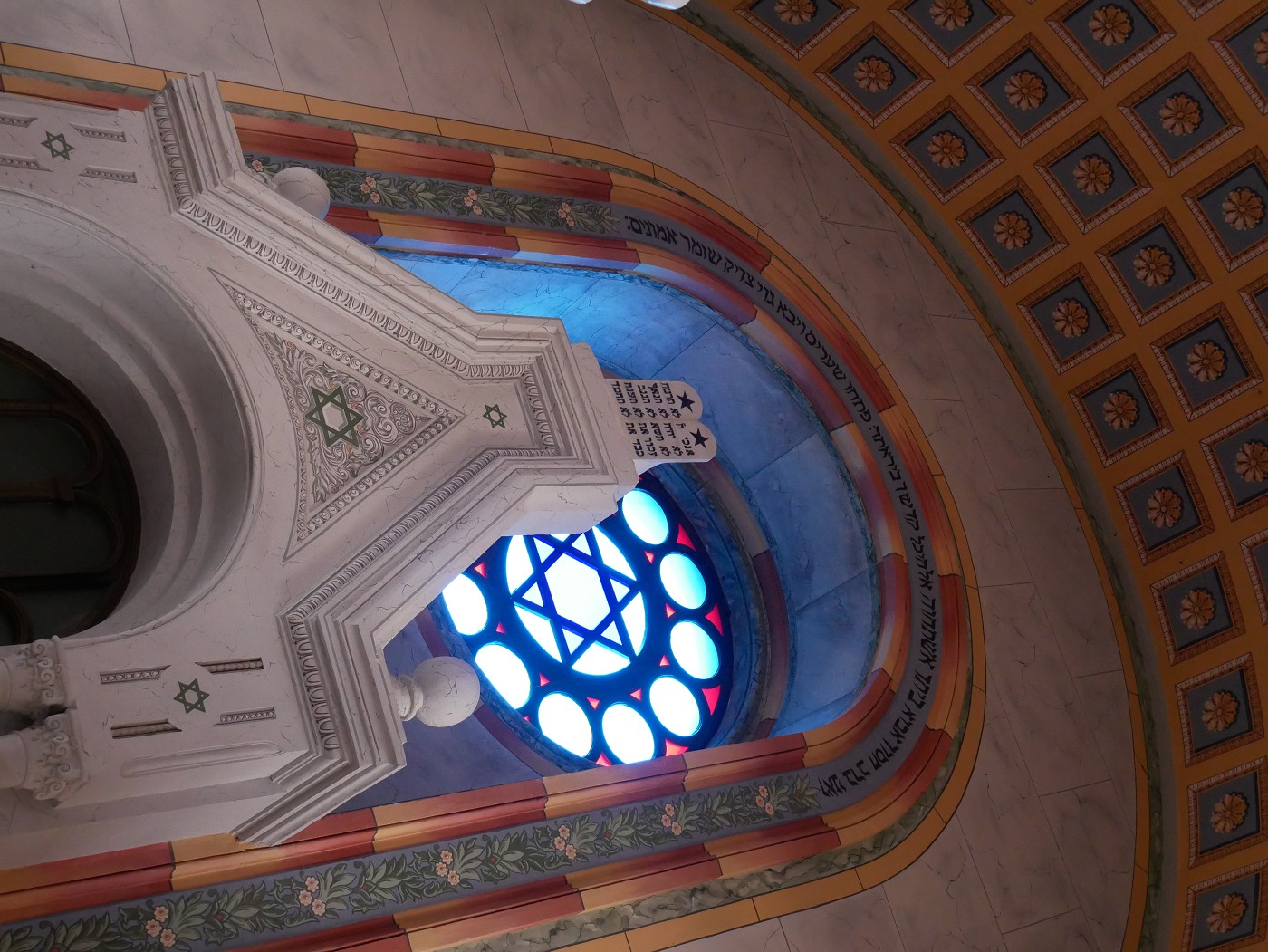
We take some photos before we head out again.



History of the Great Synagogue of Edirne
Edirne had a thriving Jewish population for many years. The Ottoman Empire already had small Jewish populations, but the biggest change came in the 15th century.
In 1492, Spain expelled its Jews or forced them to convert to Christianity. This antisemitic policy made many Sephardi Jews refugees across Europe and Africa. Sultan Bayezid II of the Ottoman Empire decided to welcome them. The Ottoman navy sailed the Mediterranean to evacuate the Jews and remaining Muslims from Spain to resettle more than 40.000 Jews in what is now Turkey and Greece. Bayezid II granted them Ottoman citizenship and sent word to cities across the empire to treat them well, or else.
They settled in Constantinople, Thessaloniki, and Edirne – which was already the former capital of the Ottoman Empire – and brought with them new technologies such as the printing press. They also brought their language Ladino (Judaeo-Spanish) with them that resembles Spanish.
At the start of the 20th century, Edirne had a total population of 65.000–80.000, of which 12.000–20.000 were Jews. There were 13 synagogues in the city to serve the community’s spiritual needs. But in 1905, Edirne burned and the fire destroyed more than 1500 buildings including all the synagogues. In need of a place of worship, the sultan decided in 1906 to build the Great Synagogue of Edirne to replace the lost ones. They invited a French architect and the building opened for services in 1909. It was the third-largest synagogue in Europe at that time.
The Jewish population declined over the course of the 20th century. The Ottoman Empire became the Republic of Turkey in 1923. And in 1934, the Thrace pogroms also affected the Jews of Edirne. More than 15.000 Jews left Thrace. And though Turkey received many Jewish refugees during the Holocaust, antisemitic propaganda and attitudes made it a hostile place to live. Simultaneously, minorities were forced to use only the Turkish language. With the establishment of the State of Israel in 1948, many Jews worldwide made aliyah. Edirne lost a lot of its Jewish inhabitants and in 1983, the Great Synagogue of Edirne was abandoned.
Without maintenance, the roof collapsed and the weather ruined the interior. The Great Synagogue of Edirne was as good as lost.
In 2007, the monument came under the management of an Edirne heritage directorate. Renovation works started in 2010. Though parts were still standing, they had to fix things from the foundation upward. The whole building was remade and received the necessary updates of the time. It reopened to the public in 2015 with the message “Welcome to your home, our old neighbors”. The rabbi that led the last service before abandonment also led the first service in 2015.
Today, in all of Turkey, there are fewer than 20.000 Jews. Fixer-upping a synagogue doesn’t solve antisemitism; Jews are still leaving Turkey. There are fewer and fewer Ladino speakers. But it’s an invitation to stay and be.















